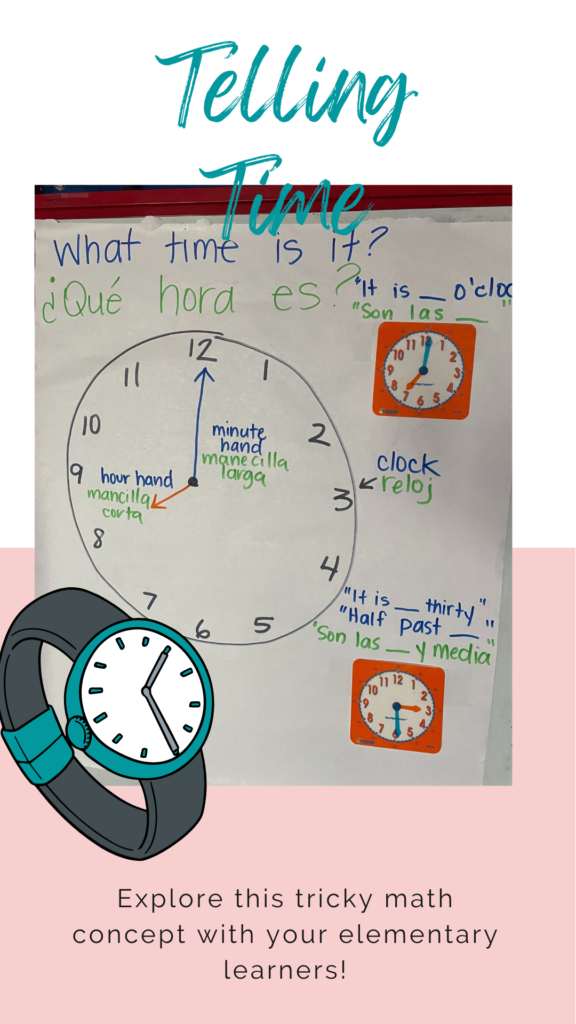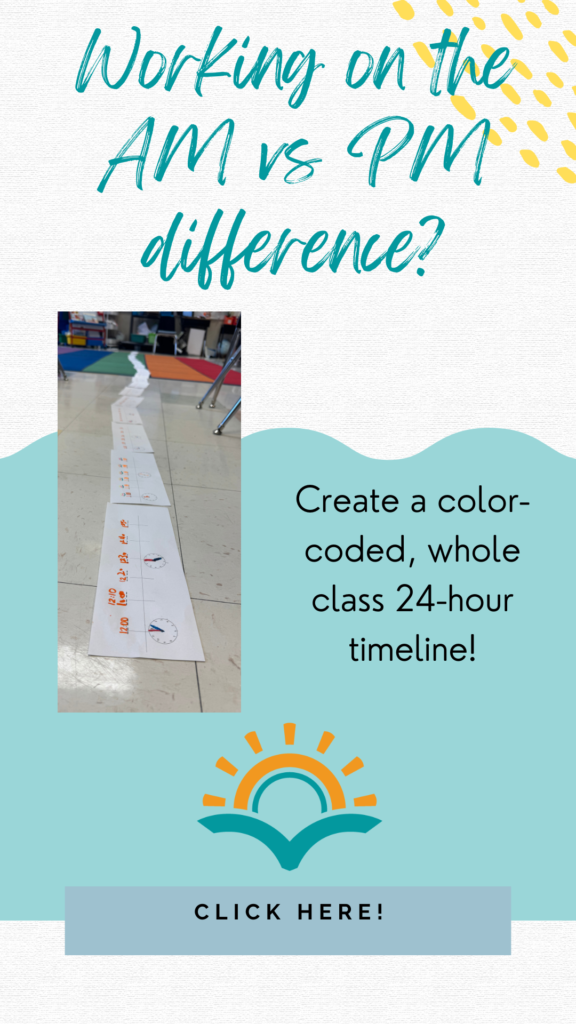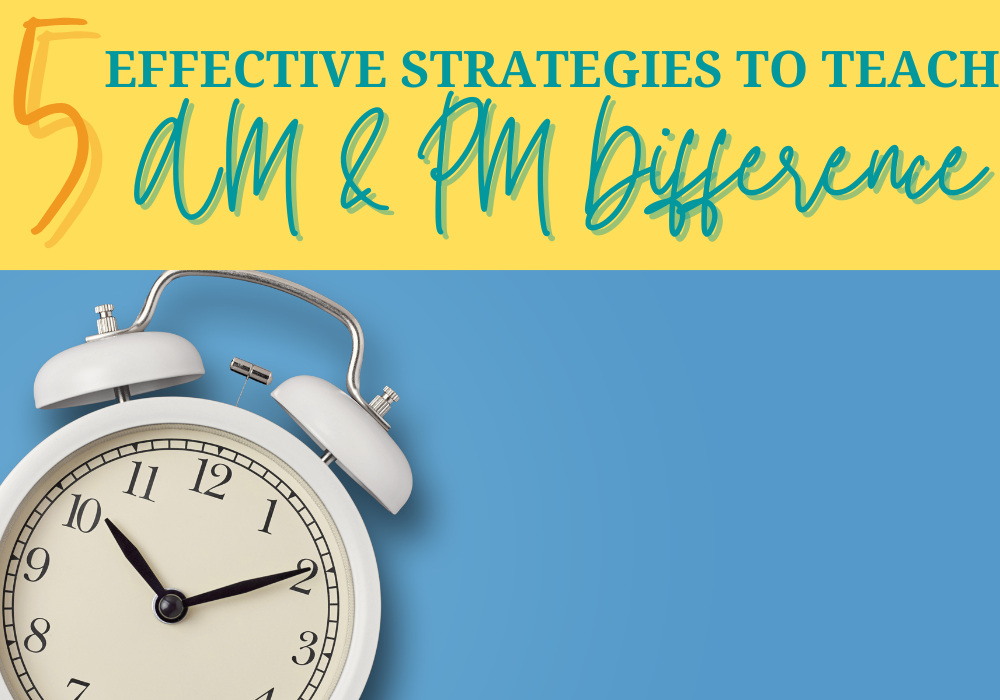In early elementary education, the concept of time is abstract and can be a bit of a head-scratcher for young minds. Among the many time-related mysteries, understanding the difference between AM and PM stands out. As elementary teachers, it’s our mission to turn this confusing concept into a captivating lesson that leaves a lasting impression. In this blog post, we’ll explore creative and effective ways to teach first and second-grade students the distinction between AM and PM.

Strategy 1: Introduce the Basics with Daily Routines
Start by explaining the simple idea that our day is divided into two parts: daytime and nighttime. Connect these divisions to their daily routines, emphasizing that activities like waking up, going to school, and having lunch occur during the day (AM), while bedtime and sleeping happen at night (PM). Use visuals, like a colorful daily schedule, to anchor these concepts in real-life scenarios.
Strategy 2: Make it fun!
Incorporate ways to make learning the AM and PM difference fun! For a week or so, my class and I had a “12:00 PM Party” where, if they noted the exact time that we made the AM/PM switch, all students got to stand up for a 1-minute dance party.
Strategy 3: Interactive Clock Activities
Bring out the classroom clock and make learning tangible. Make cards – or better, prompt students to make cards – of daily classroom activities. Shuffle them and then ask students to identify whether it’s AM or PM. Create a hands-on activity where students can order the images and corresponding clocks themselves, associating specific times with the appropriate part of the day. This interactive approach helps solidify the connection between time and daily activities.

Strategy 4: Storytelling Time Adventures!
Craft engaging stories that feature characters and their adventures throughout the day. Make sure to include various activities that resonate with the experiences of first and second graders. As you read the stories, ask questions like, “Is it morning or night when this happens?” Encourage students to share their own daily adventures, reinforcing the AM and PM connection.
Take it a step further by prompting students to create a timeline of their day, labeling the approximate times of each activity. Model using a school day schedule, then ask students to create a similar timeline about a weekend day!

Strategy 5: Visual Aids and Anchor Charts
As you know, visual aids are powerful tools in the elementary classroom. Create colorful and informative anchor charts that highlight the differences between AM and PM. Include visuals of suns and moons to represent day and night. Display these charts prominently in the classroom, providing a constant reference point for students to reinforce their understanding.

Teaching the AM and PM difference doesn’t need to be difficult!
Teaching the distinction between AM and PM to elementary students doesn’t have to be a daunting task. By incorporating interactive activities, stories, visuals, and creative approaches into your lessons, you’ll transform this abstract concept into a concrete understanding. Watch as your young learners become time-telling experts, confidently navigating the mysteries of AM and PM in their daily lives.


